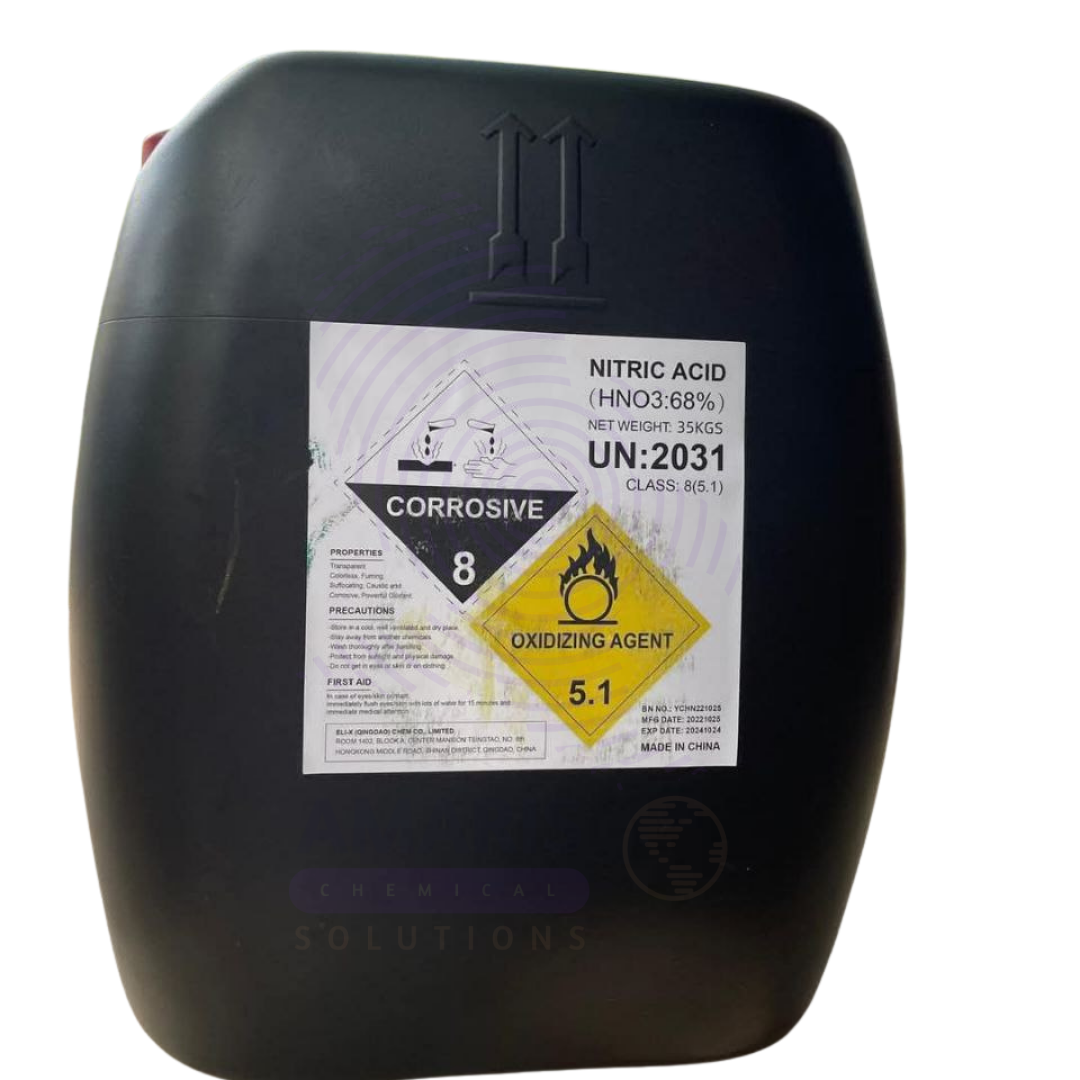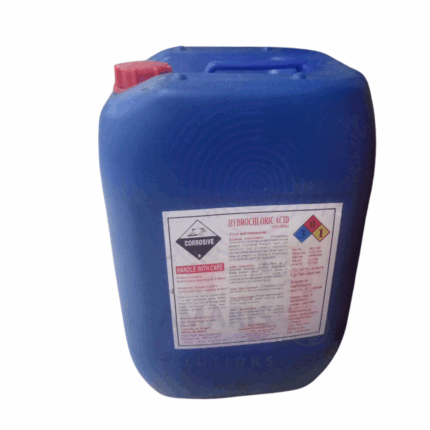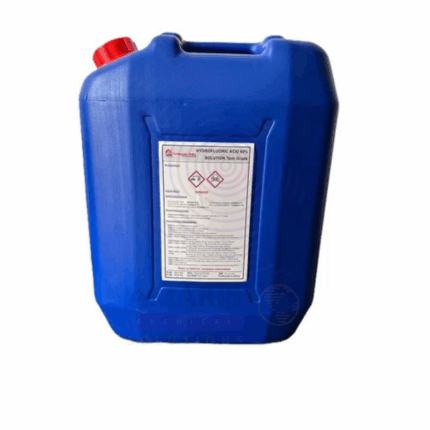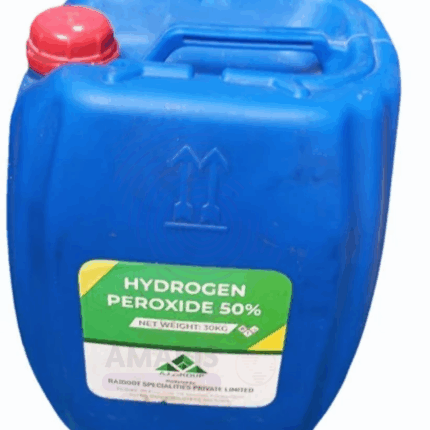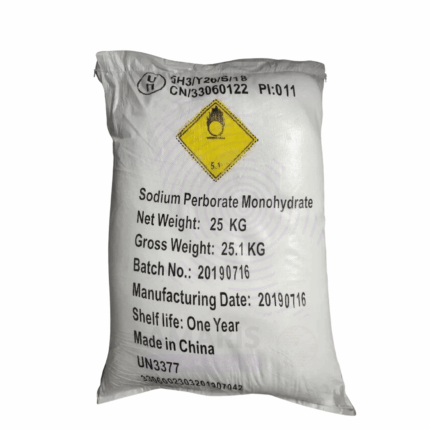Nitric Acid
$ 1.95 Original price was: $ 1.95.$ 1.88Current price is: $ 1.88.
Whatsapp Order
Nitric Acid is a concentrated aqueous solution of nitric acid (HNO₃) commonly used as a strong oxidizing acid in numerous industrial, laboratory, and manufacturing processes. It is a highly corrosive, colorless to yellowish liquid with a pungent odor. Nitric Acid 68% is fundamental in the production of fertilizers, explosives, dyes, and pharmaceuticals. It is also widely used in metal treatment, etching, and cleaning applications due to its powerful oxidizing and nitrating properties.
Categories: Oxidizing Agents, pH Modifiers
Tags: Concentrated Nitric Acid, HNO3 68%, Industrial Acid, Mining & Metal Processing, Nitric Acid 68%
Description
Table of Contents
Toggle
Nitric Acid
Primary Uses
- Fertilizer Production
- Used in the manufacture of ammonium nitrate fertilizers, a key nutrient source in agriculture.
- Explosives Manufacturing
- Essential in producing nitroglycerin, trinitrotoluene (TNT), and other nitrate explosives.
- Chemical Synthesis
- Used as a nitrating agent in the synthesis of dyes, pharmaceuticals, and organic chemicals.
- Metal Treatment & Etching
- Employed for pickling stainless steel and other metals to remove oxides and prepare surfaces.
- Used in electroplating and metal refining processes.
- Laboratory Reagent
- Commonly used in analytical chemistry for sample digestion and preparation.
Secondary Uses
- Wastewater Treatment
- Used to neutralize alkaline wastes and assist in chemical treatment processes.
- Cleaning Agent
- Employed in specialized cleaning applications to remove mineral deposits and rust.
- Rocket Propellant Manufacture
- Used as a component in liquid rocket propellants (in combination with other chemicals).
- Textile Industry
- Utilized in dyeing and finishing processes to introduce nitro groups into textile chemicals.
KEY PRODUCT FEATURES
Key Attributes
Basic Identification Attributes
- Chemical Name (IUPAC): Nitric acid
- Common/Trade Name: Nitric Acid 68%
- CAS Number: 7697-37-2
- HS Code: 2808.00.00
- Synonyms: Aqua fortis, spirit of nitre
Physical & Chemical Properties
- Physical State: Liquid
- Color & Odor: Colorless to pale yellow; sharp, acrid odor
- Concentration: Typically 68% by weight
- Density: Approx. 1.41 g/cm³
- Boiling Point: ~120.5°C (at 68%)
- Solubility: Miscible with water
Safety & Hazard Attributes
- GHS Classification: Corrosive (Category 1), Oxidizing (Category 3), Acute toxicity (Category 3 inhalation)
- Toxicity: Highly corrosive to skin, eyes, and respiratory tract
- Exposure Limits: Strict occupational exposure limits apply (e.g., OSHA PEL 2 ppm)
Storage & Handling Attributes
- Storage Conditions: Store in cool, well-ventilated, corrosion-resistant containers away from combustible materials and bases
- Container Type: Typically supplied in acid-resistant plastic or glass-lined steel containers
- Shelf Life: Stable if stored properly under recommended conditions
- Handling Precautions: Use acid-resistant gloves, face shield, and protective clothing; handle under fume hood or in well-ventilated areas
Regulatory & Compliance Attributes
- Complies with international standards for industrial nitric acid
- Listed as a hazardous material under OSHA, REACH, and other regulations
- Subject to strict transport and storage regulations due to corrosivity and oxidizing nature
Environmental & Health Impact
- Biodegradability: Not biodegradable; neutralizes to nitrates in environment
- Ecotoxicity: Highly toxic to aquatic life; avoid release into waterways
- Bioaccumulation: Not expected to bioaccumulate
- Carcinogenicity/Mutagenicity: Not classified as carcinogenic
SAFETY HANDLING PRECAUTIONS
Safety Handling Precautions
- PPE Required: Acid-resistant gloves, eye protection, face shield, protective clothing, and respiratory protection if airborne exposure possible
- Handling Guidelines: Use in well-ventilated areas; avoid skin, eye contact, and inhalation of vapors
- Storage Measures: Keep containers tightly closed and segregated from incompatible substances
First Aid Measures
- Inhalation: Move to fresh air immediately; seek urgent medical attention
- Skin Contact: Rinse immediately with plenty of water for at least 15 minutes; remove contaminated clothing; seek medical care
- Eye Contact: Flush eyes with water continuously for at least 15 minutes; urgent medical attention required
- Ingestion: Do not induce vomiting; rinse mouth; seek emergency medical care immediately
Firefighting Measures
- Fire Hazards: Non-flammable but reacts violently with many materials
- Extinguishing Media: Use water spray, fog, or alcohol-resistant foam; avoid dry chemical on large spills
- Special Precautions: Wear full protective gear and self-contained breathing apparatus (SCBA)
- Hazardous Combustion Products: May release nitrogen oxides (NOx) and other toxic gases
Related products
Hydrochloric Acid HCL
Hydrochloric Acid HCL is a highly corrosive, strong mineral acid consisting of hydrogen chloride gas dissolved in water to a concentration of approximately 33% by weight. It appears as a clear, colorless to slightly yellow liquid with a sharp, pungent odor. HCl 33% is widely used in industrial, chemical, and laboratory applications due to its strong acidic properties, high reactivity, and versatility. It plays a crucial role in pH control, metal processing, chemical synthesis, and cleaning processes across numerous sectors.
Hydrofluoric Acid HF
Hydrofluoric Acid HF is a highly corrosive aqueous solution of hydrogen fluoride gas dissolved in water. It is a colorless to pale yellow fuming liquid with a strong pungent odor. Unlike other mineral acids, HF is a weak acid chemically but uniquely reactive due to its ability to dissolve silica and glass, and penetrate tissues deeply. This makes it invaluable in numerous industrial, laboratory, and specialized applications but also highly hazardous.
Hydrogen Peroxide Food Grade
Hydrogen Peroxide Food Grade is a highly concentrated aqueous solution of hydrogen peroxide (H₂O₂), formulated specifically for use in food processing and related applications. It appears as a clear, colorless liquid with a slightly sharp, acrid odor. Renowned for its powerful oxidizing and bleaching properties, hydrogen peroxide is a strong antimicrobial agent and environmentally friendly disinfectant that decomposes into water and oxygen, leaving no harmful residues. The food-grade designation ensures compliance with strict purity standards, making it suitable for direct and indirect food contact uses, including sterilization, sanitation, and preservation.
Hydrogen Peroxide Tech Grade
Hydrogen Peroxide Tech Grade is a highly concentrated aqueous solution of hydrogen peroxide (H₂O₂) designed primarily for industrial and technical applications. It is a clear, colorless liquid with a sharp, acrid odor. Known for its strong oxidizing, bleaching, and disinfecting properties, this tech-grade formulation is typically used where high reactivity is required, often in non-food processes. It decomposes into environmentally benign by-products—water and oxygen—making it a preferred agent for sustainable industrial processes.
Silicon Dioxide
Silicon Dioxide (SiO₂), commonly known as silica, is a naturally occurring inorganic compound found abundantly in the Earth’s crust. In its refined, powdered form, it is used as an anti-caking agent, filler, absorbent, and thickener across a wide range of industries. It is odorless, tasteless, chemically inert, and stable under normal conditions. Packaged in 10kg units, silicon dioxide is highly versatile and widely accepted for use in food, pharmaceutical, cosmetic, and industrial applications.
Sodium Nitrate (25kg)
Sodium Nitrate is an inorganic white crystalline solid with the chemical formula NaNO₃. This 25kg packaged industrial-grade product serves as a powerful oxidizing agent and nitrogen source, widely used in fertilizers, pyrotechnics, food preservation, and chemical manufacturing. Its high solubility and stability make it ideal for controlled oxidation processes and nitrate salt production.
Sodium Perborate
Sodium Perborate is a white crystalline oxidizing compound with the chemical formula NaBO₃·nH₂O (typically tetrahydrate or monohydrate). This versatile chemical serves as a stable, eco-friendly bleaching agent and disinfectant, widely used in detergents, cleaning products, and personal care formulations. Its controlled oxygen release makes it valuable for gentle stain removal and antimicrobial applications while being more environmentally favorable than chlorine-based alternatives.
Sulphuric Acid 98%
Sulphuric Acid 98% is a dense, highly corrosive, and strong mineral acid widely used as a fundamental chemical reagent and industrial raw material. It serves as a key component in fertilizer production, chemical synthesis, petroleum refining, and many other industrial processes. The 98% concentration is the concentrated, nearly pure form commonly utilized for manufacturing and processing applications demanding high acid strength and purity.


 Preservatives(food)
Preservatives(food) Flavor Enhancers
Flavor Enhancers Acidulants
Acidulants Sweeteners
Sweeteners Antioxidants
Antioxidants Colorants(food)
Colorants(food) Nutraceutical Ingredients (food)
Nutraceutical Ingredients (food) Nutrient Supplements
Nutrient Supplements Emulsifiers
Emulsifiers
 Collectors
Collectors Dust Suppressants
Dust Suppressants Explosives and Blasting Agents
Explosives and Blasting Agents Flocculants and Coagulants
Flocculants and Coagulants Frothers
Frothers Leaching Agents
Leaching Agents pH Modifiers
pH Modifiers Precious Metal Extraction Agents
Precious Metal Extraction Agents
 Antioxidants(plastic)
Antioxidants(plastic) Colorants (Pigments, Dyes)
Colorants (Pigments, Dyes) Fillers and Reinforcements
Fillers and Reinforcements Flame Retardants
Flame Retardants Monomers
Monomers Plasticizers
Plasticizers Polymerization Initiators
Polymerization Initiators Stabilizers (UV, Heat)
Stabilizers (UV, Heat)
 Antifoaming Agents
Antifoaming Agents Chelating Agents
Chelating Agents Coagulants and Flocculants
Coagulants and Flocculants Corrosion Inhibitors
Corrosion Inhibitors Disinfectants and Biocides
Disinfectants and Biocides Oxidizing Agents
Oxidizing Agents pH Adjusters
pH Adjusters Scale Inhibitors( water)
Scale Inhibitors( water)
 Antioxidants(cosmetic)
Antioxidants(cosmetic) Emollients
Emollients Fragrances and Essential Oils
Fragrances and Essential Oils Humectants
Humectants Preservatives
Preservatives Surfactants(cosmetic)
Surfactants(cosmetic) Thickeners
Thickeners UV Filters
UV Filters
 Fertilizers
Fertilizers Soil Conditioners
Soil Conditioners Plant Growth Regulators
Plant Growth Regulators Animal Feed Additives
Animal Feed Additives Biostimulants
Biostimulants Pesticides (Herbicides, Insecticides, Fungicides)
Pesticides (Herbicides, Insecticides, Fungicides)
 Active Pharmaceutical Ingredients (APIs)
Active Pharmaceutical Ingredients (APIs) Excipients
Excipients Solvents(pharmaceutical)
Solvents(pharmaceutical) Antibiotics
Antibiotics Antiseptics and Disinfectants
Antiseptics and Disinfectants Vaccine Adjuvants
Vaccine Adjuvants Nutraceutical Ingredients (pharmaceutical)
Nutraceutical Ingredients (pharmaceutical) Analgesics & Antipyretics
Analgesics & Antipyretics
 Analytical Reagents
Analytical Reagents Solvents(lab)
Solvents(lab) Chromatography Chemicals
Chromatography Chemicals Spectroscopy Reagents
Spectroscopy Reagents microbiology-and-cell-culture-reagents
microbiology-and-cell-culture-reagents Molecular Biology Reagents
Molecular Biology Reagents Biochemical Reagents
Biochemical Reagents Inorganic and Organic Standards
Inorganic and Organic Standards Laboratory Safety Chemicals
Laboratory Safety Chemicals Specialty Laboratory Chemicals(Special Laboratory Equipment)
Specialty Laboratory Chemicals(Special Laboratory Equipment)
 Demulsifiers
Demulsifiers Hydraulic Fracturing Fluids
Hydraulic Fracturing Fluids Scale Inhibitors(oil)
Scale Inhibitors(oil) Surfactants(oil)
Surfactants(oil) Drilling Fluids
Drilling Fluids
 Dyes and Pigments
Dyes and Pigments Bleaching Agents
Bleaching Agents Softening Agents
Softening Agents Finishing Agents
Finishing Agents Antistatic Agents
Antistatic Agents
 Admixtures
Admixtures Waterproofing Agents
Waterproofing Agents Sealants and Adhesives
Sealants and Adhesives Curing Compounds
Curing Compounds Concrete Repair Chemicals
Concrete Repair Chemicals Anti-Corrosion Coatings
Anti-Corrosion Coatings
 Surfactants(cleaning)
Surfactants(cleaning) Builders
Builders Enzymes
Enzymes Solvents (Cleaning)
Solvents (Cleaning) Fragrances
Fragrances
 Electronic Chemicals
Electronic Chemicals Catalysts
Catalysts Lubricants
Lubricants Photographic Chemicals
Photographic Chemicals Refrigerants
Refrigerants Automotive chemicals
Automotive chemicals Pyrotechnic Chemicals
Pyrotechnic Chemicals
 Biodegradable Surfactants
Biodegradable Surfactants Bio-based Solvents
Bio-based Solvents Renewable Polymers
Renewable Polymers Carbon Capture Chemicals
Carbon Capture Chemicals Wastewater Treatment Chemicals
Wastewater Treatment Chemicals
 Pigments
Pigments Solvents(paint)
Solvents(paint) Specialty Coatings
Specialty Coatings Binders/Resins
Binders/Resins Additives
Additives Driers
Driers Anti-Corrosion Agents
Anti-Corrosion Agents Functional Coatings
Functional Coatings Application-Specific Coatings
Application-Specific Coatings
 Fresh Herbs
Fresh Herbs Ground Spices
Ground Spices Whole Spices
Whole Spices Spice Blends
Spice Blends Dried Herbs
Dried Herbs
 Leavening Agents
Leavening Agents Dough Conditioners
Dough Conditioners Flour Treatments
Flour Treatments Fat Replacers
Fat Replacers Decoratives
Decoratives Preservatives(baking)
Preservatives(baking)
 Plasticizers & Softeners
Plasticizers & Softeners Reinforcing Agents
Reinforcing Agents Adhesion Promoters
Adhesion Promoters Vulcanizing Agents
Vulcanizing Agents Antidegradants
Antidegradants Blowing Agents
Blowing Agents Fillers & Extenders
Fillers & Extenders Accelerators & Retarders
Accelerators & Retarders